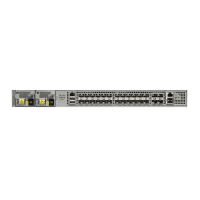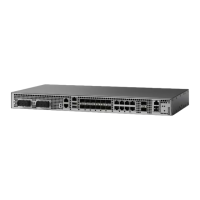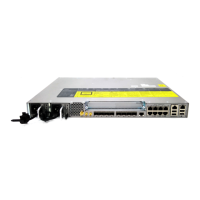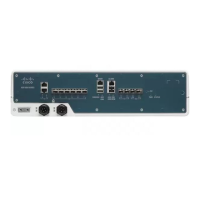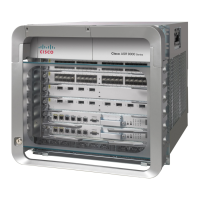3-49
Cisco ASR-920-24SZ-IM, ASR-920-24SZ-M, ASR-920-24TZ-M Aggregation Services Router Hardware Installation Guide
Chapter 3 Installing
Connecting a Router to the Network
Note Connect only SELV services to all the Cisco ASR 920-24SZ-IM, ASR-920-24SZ-M, ASR-920-24TZ-M
Router ports.
Connecting Console Cables
The following sections describe how to connect to the Cisco ASR 920-24SZ-IM, ASR-920-24SZ-M,
ASR-920-24TZ-M Router using console cables:
• “Connecting to the USB Serial Port Using Microsoft Windows” section on page 3-49
• “Connecting to the Console Port Using Mac OS X” section on page 3-50
• “Connecting to the Console Port Using Linux” section on page 3-50
• “Installing the Cisco USB Device Driver” section on page 3-51
• “Uninstalling the Cisco USB Device Driver” section on page 3-52
• “Connecting to the EIA Console Port” section on page 3-52
Connecting to the USB Serial Port Using Microsoft Windows
This procedure shows how to connect to the USB serial port using Microsoft Windows.
Note Install the USB device driver before establishing a physical connection between the router and the PC,
by using the USB console cable plugged into the USB serial port. Otherwise, the connection will fail.
For more information, see the “Installing the Cisco USB Device Driver” section on page 3-51.
Step 1 Connect a USB Type A-to-Type A cable to the USB console port, as shown in Figure 3-37. If you are
using the USB serial port for the first time on a Windows-based PC, install the USB driver now according
to the instructions in the following sections:
• Installing the Cisco USB Device Driver, page 3-51
• Uninstalling the Cisco USB Device Driver, page 3-52
Note You cannot use the USB port and the EIA port concurrently. When the USB port is used, it takes
priority over the EIA port.
Step 2 Connect the USB Type A cable to the PC.
Step 3 To communicate with the router, start a terminal emulator application, such as Microsoft Windows
HyperTerminal. This software should be configured with the following parameters:
• 9600 baud
• 8 data bits
• no parity
• 1 stop-bit
• no flow control
